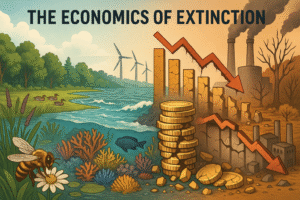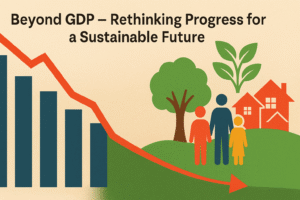In an age where economic dynamism shapes global narratives, India stands at the cusp of a significant transformation. According to a compelling analysis by S&P Global Ratings, India is not only on track to become the world’s third-largest economy by 2030 but is also expected to lead as the fastest-growing major economy in the coming years. This development marks a pivotal shift in the global economic landscape.
India’s Economic Evolution: The Indian economy, traditionally dominated by services, is undergoing a metamorphosis. The S&P Global report, ‘Global Credit Outlook 2024: New Risks, New Playbook,’ underscores India’s potential transition into a manufacturing hub. This shift is more than an economic change; it represents a strategic realignment of India’s role in the global market.
Growth Projections and Economic Stability: The report anticipates India’s GDP to grow at an impressive rate of 6.4% in 2023-24, maintaining a stable growth trajectory in the following years. Although a slight dip from the 7.2% growth of the previous year, these figures underscore the resilience and stability of the Indian economy amidst global uncertainties.
The Shift in Asia-Pacific’s Growth Engine: With China’s economy projected to decelerate, the epicenter of economic growth in the Asia-Pacific region is shifting towards South and Southeast Asia. This regional pivot enhances India’s role as a primary driver of economic activity, offering it an opportunity to set new benchmarks in economic growth and innovation.
India’s Recent Economic Performance: India’s recent economic performance has been robust, with a 7.6% growth rate in the July-September quarter, surpassing expectations. This growth, driven by a surge in manufacturing and investments, indicates the beginning of India’s transformation into a manufacturing-led economy.
Unleashing the Labor Market’s Potential: A key aspect of India’s growth will be its ability to unlock the full potential of its labor market. Upskilling the workforce and increasing female participation are crucial steps towards harnessing India’s demographic dividend. The burgeoning digital economy and the high-growth startup ecosystem, particularly in fintech and consumer tech, are also poised to contribute significantly to India’s economic narrative.
Navigating Challenges: The path to becoming an economic superpower is not without challenges. The global economic climate, characterized by high-interest rates and inflation, poses risks. India, like other emerging economies, needs to fortify policy predictability to attract and retain investment. Moreover, geopolitical tensions and the looming threats of cyberattacks are challenges that require strategic handling.
Conclusion: As India marches towards 2030, it does so with the promise of economic greatness and the challenge of navigating a complex global landscape. The nation’s journey from a services-dominated economy to a manufacturing and innovation hub is a testament to its adaptive capabilities and strategic vision. In this transformative phase, India is not just growing; it’s rising to global prominence, redefining its role on the world stage, and inviting the world to witness its economic renaissance.





Comments
Pingback: Global Economic Slowdown: Emerging Markets’ Path to Resilience – Part 2 - ecosociosphere
I don’t think the title of your article matches the content lol. Just kidding, mainly because I had some doubts after reading the article.
Your article helped me a lot, is there any more related content? Thanks!